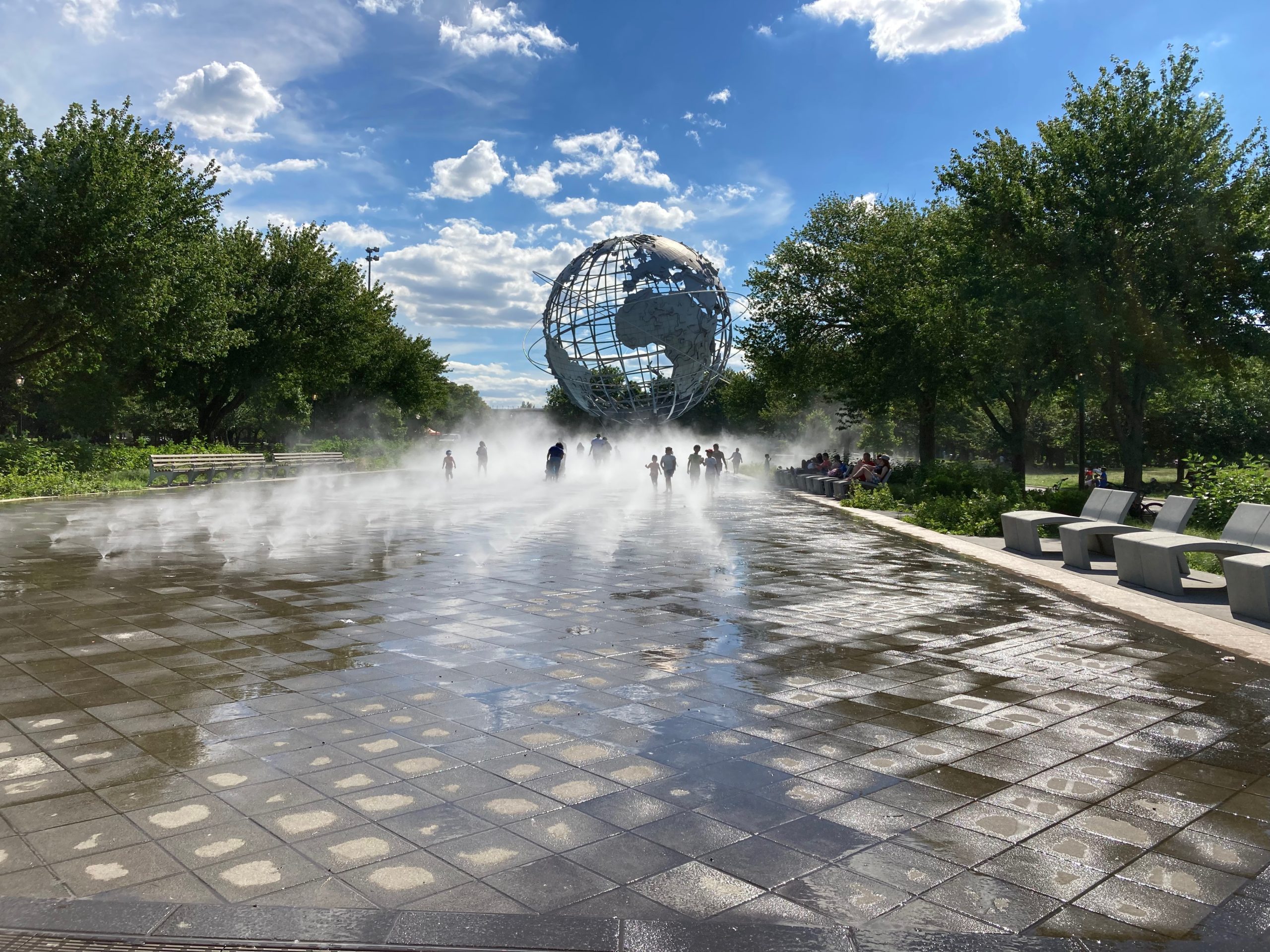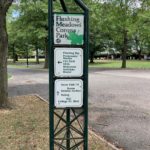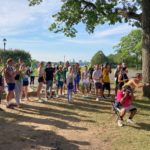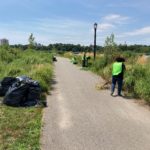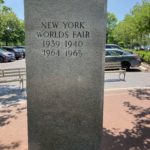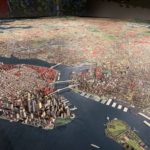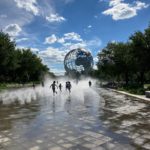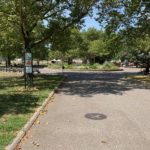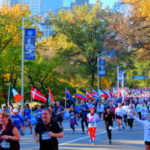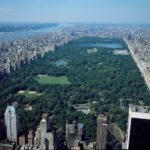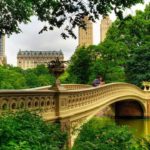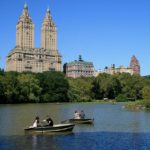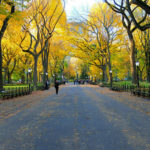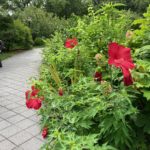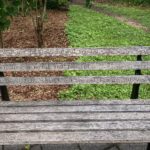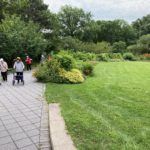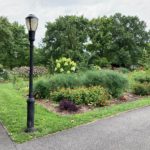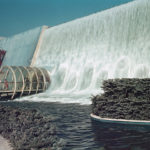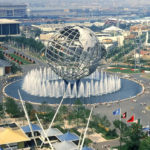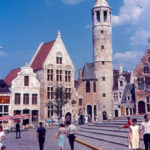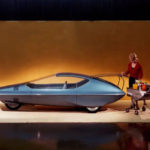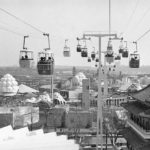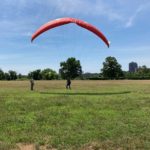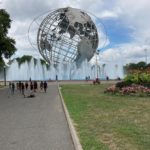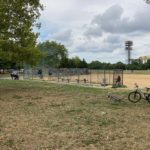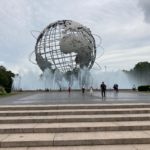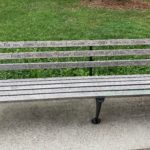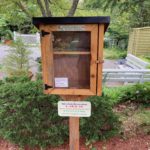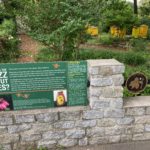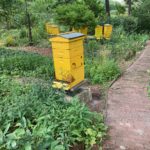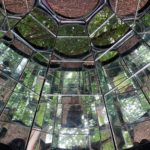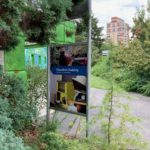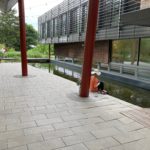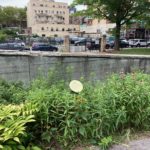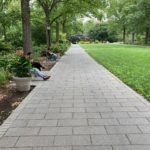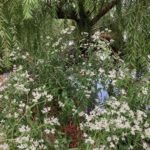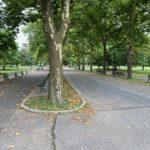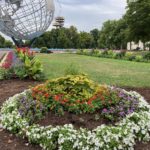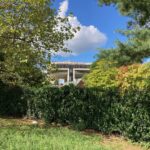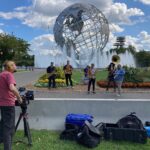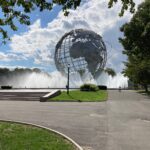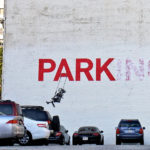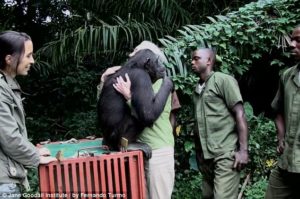“I think it pisses God off if you walk by the color purple in a field somewhere and don’t notice it. People think pleasing God is all God cares about. But any fool living in the world can see it always trying to please us back.”
– Pulitzer Prize winning author and fellow Vegan Alice Walker
Many years ago, I got lucky on an apartment in Manhattan, and for 12 years, I lived just a few blocks from Central Park. Life is what happens to you while you’re busy making plans, and for what seems like a lifetime, I met family, friends, and new love interests there, attended concerts, enjoyed jogs at any hour, read books, completed marathons, and always somehow remained energized after countless encounters, and too many anxious late night crossings due to a scarcity of buses and cabs. My appreciation and affection grew, and before I knew it, I loved Central Park!
Frederick Law Olmsted designed the grounds of New York City’s Central Park in 1858 (he was also responsible for the landscape architecture of the U.S. Capitol in Washington, D.C.). According to Mr. Olmsted, “The beauty of the park should be the beauty of the fields, the meadow, the prairie, of the green pastures, and the still waters. What we want to gain is tranquility and rest to the mind.” After spending a big chunk of my time in and around Central Park, I can tell you that Frederick Olmsted more than delivered on his vision!
“Parks are works of art just as a painting or sculpture is.” – Thomas Hoving
As per the Central Park Website, “The plan (from Frederick Olmsted and Calvert Vaux for the layout of Central Park) was naturalistic: large pastoral landscapes and wooded areas would provide New Yorkers with a rural repose from the City. One of the plan’s standout features was the sunken transverse roads, a required element of the design competition, which Olmsted and Vaux hid below the landscapes, out of sight from Park goers…Olmsted’s vision for Central Park was inspired by Birkenhead Park, widely acknowledged as the first publicly funded park in England. Built in response to poor living conditions in the surrounding industrial areas, Birkenhead Park was built for public use, a novel idea at a time when European parks were often housed on formal estates. Olmsted believed Central Park should be a democratic space, a place where people of all backgrounds, rich and poor, women and men, could congregate and enjoy leisurely activities. Central Park would have informal woodlands with winding paths and naturalistic landscapes that would allow those without the means to travel an opportunity to experience a more rural setting…New York’s Central Park is a world-famous public park, created beginning in 1858 to address the recreational needs of the rapidly growing City. Its original purpose was to offer urban dwellers an experience of the countryside, a place to escape from the stresses of urban life and to commune with nature and fellow New Yorkers. Over 150 years later, the Park still provides this essential purpose, and welcomes all visitors, while accommodating newer forms of recreational activities. With 42 million visits a year, Central Park is one of the most visited urban parks in the country and one of the most popular destinations in New York City.”
Central Park is for the most part, clean and gorgeous, but it takes a village, and wonderful organizations like the Central Park Conservancy to keep it that way. If you have ever spent time in Central Park, you are familiar then with the “sunken transverse roads”, which really do transport you to another time and place as you often cannot see or hear any part of one of the busiest cities in the world (nor would you want to). Central Park provides a genuine means of escape from the frenetic energy of city life, as well as an authentic opportunity to commune with nature. Go figure. Comedian Robin Williams once joked of love being in the air during springtime, and how male birds show off while boastfully singing, “check it out, check it out, I am incredible, check it out” (click here for the LOL clip). Central Park has that kind of energy in the springtime, and there is nothing like its anticipated buzz, and the excited sounds of different languages being spoken by all of the park’s inhabitants. Many human visitors go to the park to reminisce, laugh, love, and cry too. Exchanging ideas, and artist performances/rehearsals are common, as is, because it is NY, the occasional F-bomb as well. In other words, what’s not to love about Central Park? 🙂
Fast forward to many years later, and I find myself once again feeling lucky for different reasons, and living close to yet another big NYC Park in a much maligned, and less sexier borough of New York City. And you guessed it, I love the “new” park too. I am talking about Flushing Meadows Corona Park (FMCP), in Queens, NY. The park is famous for hosting the 1939 & 1964 World’s Fairs (which rocked btw), and it is also home to the Queens Museum, New York Hall of Science, remarkable wildlife, Queens Zoo, Meadow Lake , Willow Lake, Sailing lessons, Paddle boat rides, Quadricycle rentals, soccer, baseball, cricket, and football fields, hiking trails and running paths, a fantastic wedding venue (Terrace on the Park), basketball, handball and tennis courts, and many other cool features and offerings as well. Phew! I recently learned that one of my favorite parts of the park, Queens Botanical Garden (QBG), hasn’t officially been a part of the park since 1961. Many years ago, FMCP was connected to the uniquely calming Queens Botanical Garden, and even though they have since parted ways, QBG is still only 1-2 block away, and well worth the $6 price of admission! 🙂
Since Flushing Meadows Corona Park is considered by some to be a sort of ugly step-child of Central Park, I will try to explain why, despite its faults, Flushing Meadows Corona Park is no less a great city park too! 🙂
The Best and Worst parts of Flushing Meadows Corona Park (FMCP)
Unfortunate Aspects of FMCP
Permanently Placed Barbecue Grills – One of the biggest disappointments of Flushing Meadows Corona Park is the built-in BBQ grills that are scattered throughout both sides of the giant park (billowing toxic smoke can often be seen drifting throughout the park during the spring and summer months). Over 71% of Americans are overweight or obese (nearly 20% of US children are now obese as well), and encouraging people to eat animal products is irresponsible, as lifestyle diseases such as heart disease, cancer, and type 2 diabetes, remain our top killers. Despite the many health risks of consuming animal products, there are additional health concerns as well with regards to how the food is prepared. When meat is grilled, the flames produce toxic carcinogens called polycyclic aromatic hydrocarbons (PAH). These carcinogens form when oils from the meat drip into flame and smoke. The rising smoke deposits the carcinogens right on the cooking meat. High grilling temperatures also convert amino acids and proteins in meat into dangerous toxins called heterocyclic amines (HCA). If you still insist on going there, try to clean the grates on the grill thoroughly to remove the carcinogens in the “char” from the last piece of meat that was grilled.
Click here to learn more about the health risks of barbecue cooking.
Click here for a list of the 10 most delicious plant-based foods that can easily be grilled (from the FFAC).
Click here to learn more from Dr. Caldwell Esselstyn on how plant-based diets can reverse heart disease.
Multiple Ice Cream Trucks & Junk Food Kiosks and Food Carts – One Saturday afternoon I took a long walk through the park and counted 5 ice cream trucks. Ice cream truck owners are peddling poison to young children, and contributing mightily to the misery of animals and the destruction of our planet. I know that things can’t change overnight, but city officials need to do a better job of educating visitors, and making healthier food options available at all of the parks and facilities.
Click here to learn more from Dr. T. Colin Campbell on how casein, the main protein found in cow’s milk, causes cancer.
Click here to learn more from SUNY Downstate Health Sciences University on the power of plant-based nutrition.
Flushing Meadows Corona Park is not always the cleanest or quietest park. Depending on the day, parts of it can be a mess, and quite loud too – The NYC Parks staff does a superb job of trying to keep the parks clean, as I see at least a few hard working people trying to stay ahead of the litter/garbage during every visit. On Fridays and Saturday evenings during the summer, groups of mostly young people typically take over one of the FMCP parking lots, and turn it into a sort of dance club, loud music and all (to the extent that you can hear the music outside of the other end of the park). I know that is important for everyone to have fun, but I can only imagine how this level of noise frightens the wildlife, and makes a leisurely evening walk far less enjoyable for older park visitors too.
The Park is Becoming Less Public and More Private (In other words, less public friendly): As per The Cultural Landscape Foundation, “In the early 20th century, according to the 1939 World’s Fair official guidebook, the site was known as the “Corona Dumps.” Its transformation was, “the largest single reclamation project ever undertaken in the eastern United States” and turned giant ash piles and stagnant pools that produced, “evil odors that threatened asphyxiation to the distressed inhabitants for miles around” into a great public park. As the guidebook noted, it went, “from dump to glory…” Currently, “Much of the park is occupied by private institutions and facilities”, including: the 46.5-acre US Tennis Association’s Billie Jean King National Tennis Center (home of the US Open) that incorporates the Arthur Ashe Stadium (the world’s largest outdoor tennis-only facility), the 20,000 seat Louis Armstrong Stadium and dozens of additional courts; the 110,000-square-foot Flushing Meadows Corona Park Pool & Rink (the largest recreation complex ever built in a New York City park); a zoo; an art museum; a botanical garden; a science museum; and the 41,800-seat Citi Field baseball stadium…Unfortunately, the significance of Flushing Meadows Corona Park’s design, and its designers, is largely absent from news coverage and other discussions… When the 1939 fair opened, its president, Grover Whalen, declared, “This is your Fair, built for you and dedicated to you.” It’s been nearly 75 years since that statement was made, shouldn’t the heart of the park today still serve these democratic design ideals?”
Some of the Best Parts of Flushing Meadows Corona Park
Walking/Running paths, and Racing Events – Depending on which paths you choose, a loop around FMCP can range anywhere from 2 – 5.6 miles. The park has a total area of 897 acres (Central Park is slightly smaller at 843 acres), and because of its enormous size, it is easy to mix things up and have more fun by choosing different paths, and reversing your direction as often as you like. Click here for upcoming racing events in Flushing Meadows Corona Park.
Click here for upcoming racing events in Central Park (via NYRR).
Wildlife – Flushing Meadows Corona Park has snapping turtles, pond sliders (semi aquatic turtles, I had to look it up), over 188 species of birds (including swans, egrets, cardinals, ducks and geese), groundhogs, and even Italian Wall Lizards! I am not sure, but I may have seen a gecko the other day at the Botanical Garden. I sometimes turn off my music when I am in the park just so that I can hear the many choruses of birds doing their thing! 🙂
Diversity – Although both Central Park and FMCP are racially and ethnically diverse, I feel as though Flushing Meadows Corona Park wins the prize for being the most diverse social environment of the two. I couldn’t find supporting data, but it has been my experience that a much higher percentage of well off white people and tourists frequent Central Park, while Flushing Meadows Corona Park is mainly comprised of a wide range of people, both young and old, from various backgrounds and local communities. According to the New Yorkers for Parks website, “More than one-third of New York City residents are foreign born. Because park preferences can vary depending on cultural background, as evidenced by research and the popularity of various sports in different parts of the world, the needs and opinions of foreign-born NewYorkers should be carefully evaluated to ensure that these populations are well-served by parks and recreational opportunities.”
Click here for a report from New Yorkers for Parks.
Design – New York’s Flushing Meadows Corona Park, is the largest park in the borough of Queens and it was originally designed by the influential landscape architects Gilmore Clarke and Michael Rapuano. The park is as easy on the eyes as it is to navigate, extremely popular, and easily accessible. Gilmore Clarke and Michael Rapauno also designed, among other sites and attractions, New York City’s Bryant Park, Central Park’s Conservatory Garden and Zoo, Orchard Beach, Battery Park, the New York Botanical Garden, Stuyvesant Town, and the United Nations. Charles A. Binbaum, in his excellent piece, “Designed for Democracy: When Public Goes Private, a Park Loses Its Heart,” shared this quote from Thomas J. Campanella (a professor of city planning at Cornell University), “Clarke and Rapuano’s site plan for Flushing Meadows park was one of their largest and most lasting works…Clarke and Rapuano are the unsung authors of much of New York City’s urban landscape, the designers of many of the parks and parkways typically credited solely to Robert Moses (NY Planning Commissioner), a guy with a colossal ego”. Consequently, according to Mr. Binbaum, their work was overshadowed, and they’re not famous like Frederick Olmsted and Central Park.
Queens Museum – As per Kurt Vonnegut, “If you want to really hurt you parents, and you don’t have the nerve to be gay, the least you can do is go into the arts. I’m not kidding. The arts are not a way to make a living. They are a very human way of making life more bearable…Practicing an art, no matter how well or badly, is a way to make your soul grow, for heaven’s sake…” The Queens Museum building was was once the United Nations headquarters from 1946-1950. The Queens Museum offers free entry, or pay what you wish options, and always has inspiring exhibits that make you happy that you made the journey. It is a fine museum. They also have a vending machine near their gift shop called “Farmer’s Fridge”, which offers healthier refrigerated options (including many vegan selections!).
Queens Zoo – I have mixed feelings on zoos. In a perfect world, all animals should be free and protected. Our reality is much different however, considering the shortcomings of our species. Zoos can protect those who are endangered, and educate children, but they can also be prisons that cause immense suffering and psychological damage. Also, if your favorite zoo sells animal products like cheeseburgers, fried chicken, and ice cream in its restaurants and concession stands, then it is not truly committed to protecting animals and our only planet (let alone your personal health). I love Jane Goodall, and here is what she had to say on the subject: ‘I’m always being asked again and again, “Jane, what do you think of zoos?” Groups who believe all zoos should be closed clearly have not spent the time I have out in the wild. They haven’t seen the threats destroying chimpanzee habitat; they don’t understand what it’s like to watch a chimp struggle, wounded and lame from a wire snare. But I do. I remember sitting with a group of chimps in an American zoo once. They had a really nice enclosure and I was watching the adults groom each other and the young ones play. As I watched, I remember thinking of the chimpanzee groups I had seen in the wild who are living day to day in fear. Put yourself in the position of chimpanzees for a minute. A chimp living in a zoo where people know them, love them, understand them and protect them or a chimp in the wild who may have lost their mother the week before, watching another member of the troop as they’re wounded by a bullet from a poacher. Which would you rather be? I’d rather be in the group in the zoo. And certainly in the group here at Monarto Zoo; now that’s a good life for a chimp.’
Queens Botanical Garden (QBG) – Two words: Peaceful, and Lovely. Annual QBG memberships are $50 & $40 (for seniors). I was told that the Queens Botanical Garden is a private non-profit, and that it is no longer a part of the NYC Parks system, even though it is still owned by NYC. Huh? Regardless, the staff and the grounds are top notch, and I look forward to my next visit. Sitting quietly on a park bench in the QBG, should qualify as a type of meditation. 🙂
The New York Hall of Science – I took my students here once and they loved it. The New York Hall of Science has a first rate staff, and their exhibits are interactive and engaging. I remember thinking that the kids were not only learning, but also having a ton of fun in the process. 🙂
Flushing Meadows Corona Park’s Recent, and Not So Recent History – Evan Pritchard explained that Native Americans inhabited the Queens area for thousands of years, and spoke one of the languages of the Algonquin language family (up until the Dutch arrived in the 1630s). Over the next few hundred years, European settlers attempted to wipe out all nations of the Native American population (Click here to learn more about how the United States was founded on Genocide).
“Travel is fatal to prejudice, bigotry, and narrow-mindedness, and many of our people need it sorely on these accounts.”
– Mark Twain
World’s Fairs – Although World’s Fairs have fallen out of fashion in the United States, I still love the idea of regular international gatherings, like those held in Queens, NY, where people can exchange ideas, laughs, and hugs. If we hosted more World’s Fairs, I have no doubt that there would be far less suffering on our planet, and fewer wars. Perhaps we could schedule these year long events to coincide with the Olympics or World Cup games, and have a governing body that would take into account the needs of individual countries, so that all of the proceeds and structures that are built would benefit each respective nation, and their local communities.
Click here to learn more about the rise and fall of World’s Fairs.
Click here to learn more about the largest World Fairs of all time.
1939 World’s Fair – According to Jon Snyder, “1939’s “World of Tomorrow”, Shaped Our Today…The New York World’s Fair of 1939 and 1940 promised visitors they would be looking at the “World of Tomorrow.” Not everything they saw there came true, but plenty was close. One reason for that was the fair’s own lasting influence on American architecture and industrial design.”
1964 World’s Fair – As per The New York Times’s Alexandra S. Levine, “April in New York was once synonymous with the World’s Fair…Our last World’s Fair, which ran for six months in both 1964 and 1965, drew 51 million people to Queens, more than twice the number of annual visitors at Disney’s Magic Kingdom today, making it one of the largest events in New York City’s history. The fair was a celebration of the future, on display were new or far-fetched technologies like Ford Mustangs, color televisions and picture phones that allowed users to see the person they were calling. But even more, at a time when hopping a flight across oceans wasn’t as easy and when national quotas restricted immigration, foreigners could broadcast their best wares and fairgoers could catch a glimpse into their far-off cultures. “People of all different races and nationalities were enjoying themselves with their families, eating food from countries they hadn’t been to, seeing artwork from places they didn’t know, and being amazed by things other people were dreaming up,” said Joseph Tirella, the author of “Tomorrow-Land: The 1964-65 World’s Fair and the Transformation of America.” The fair’s motto, he said, was “Peace through understanding.”
I spent way too much time trying to find a poem that would best sum up my feelings about city parks. Fortunately, my exhausting Google search was finally rewarded with this lovely gem from Reuel Denney:
THE CITY PARK
We love this precinct, pick of grass,
Soft to a tourist warbler’s eye,
Space that a formal botany forms,
Sustained through many wilder norms
From innocent and early years.
Here we can walk the grass and say
The theme is love, by definition;
There is a you that goes with me.
The Bottom Line? NYC’s Central Park and Flushing Meadows Corona Park are both wonderful public spaces. Visit them if you can, as often as you can. And I will probably see you there! 🙂
Sources:
Click here to learn more about the wonderful work of the Central Park Conservancy.
Click here to learn more about the wetlands of Flushing Meadows Corona Park.
Click here to learn more about the wildlife at FMCP.
Click here to learn more about the birds at FMCP.
Click here for the official Central Park website.
Click here for a link to the Queens Zoo website.
Click here to learn more about Flushing Meadows Corona Park.
Click here to learn more about Farmer’s Fridge vending machines.
Click here to learn more about the history of Central Park.
Click here to learn more about the 1939 World’s Fair (Images).
Click here to learn more about the 1964 World’s Fair (Images).
Click here for a piece from AARP on the 1964 World’s Fair, and Aging.
Click here for an article from the Smithsonian on the 1964 World’s Fair (Images).
Click here for futuristic photos from the 1964 World’s Fair.
Click here for an interactive piece from The New York Times on the 1964 World’s Fair.
Click here to learn more from Jane Goodall on zoos.
Click here to see offensive restaurant menu options from The Bronx Zoo.
Click here for a map of Central Park.
Click here for a map of Flushing Meadows Corona Park (FMCP).
Click here to learn more about the history of Flushing Meadows Corona Park.
Click here for the Charles A. Birnbaum piece titled “Design for Democracy: When Public Goes Private, A Park Loses Its Heart.”

